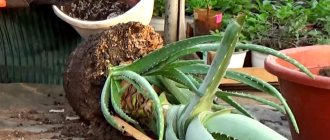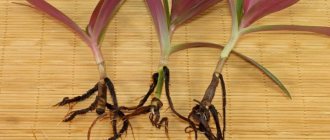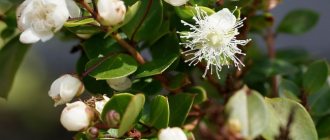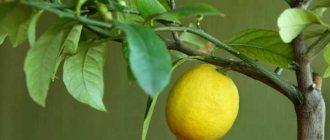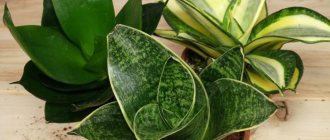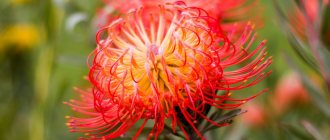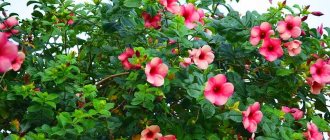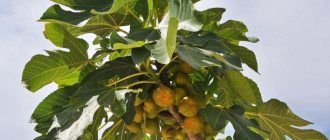We all love to grow exotic plants at home, one of such representatives is feijoa. Feijoa is an evergreen shrub of the Myrtaceae family, genus Akka. Grows in warm countries. The plant appeared in Europe in the 80s of the last century. Increasingly, they began to grow it here too. Let's figure out how to grow feijoa at home.
Features of feijoa
Feijoa is a spreading and very huge bush or tree, the height of which is approximately 4 meters. The densely branched, but compact root system is located shallow. The surface of the trunk is covered with a brownish-greenish rough layer. Cross-shaped opposite short-petioled leaf blades have pinnate veining and a rounded shape; they are entire-edged, but leathery to the touch, often drooping.
The front surface of the leaves is smooth, darkish green, and the underside is pubescent and grayish-green. Axillary four-membered bisexual flowers are paired, single, and in some cases create a small corymbose inflorescence.
They have a huge number of stamens - 50–80 units; the snow-white petals change their color to pink as they approach the base. Flowering duration is approximately 20 days. This plant needs insects for pollination.
Another reason why you need to know how to grow feijoa at home is the fruit. It is incredibly tasty and aromatic. The berry is juicy and fleshy. The shape depends on the variety. Length varies (up to 7 cm). The taste and aroma is similar to a combination of kiwi, pineapple and strawberry.
Feijoa or acca (Assa sellowiana)
This plant belongs to the myrtle family (Myrtaceae).
The plant is named after the Brazilian botanist de Silva Feijo, who was the first to draw attention to this unusual fruit crop. Feyhodsha comes from South America, where it is still found in the forests of this continent. For indoor cultivation, what is primarily important, of course, is not fruiting, but decorative qualities, and feijoa has them: gray-green foliage on top and silvery below, bright crimson-white flowers. By the way, their fleshy petals have a pleasant sour taste. In terms of frost resistance, this plant is significantly superior to citrus fruits and can safely tolerate temperatures down to minus 10 degrees Celsius.
Feijoa fruits contain water-soluble and easily digestible iodine compounds. They are used to prevent and treat cardiovascular diseases. In addition, they have pronounced bactericidal properties and have a detrimental effect on Staphylococcus aureus and Escherichia coli. Feijoa fruits are consumed fresh and in preparations (compotes, preserves, jams). In terms of vitamin C content, they are close to citrus fruits.
One type of f. is used in fruit growing. Zellova. It is a low-growing shrub or spreading tree, three to five meters high.
Feijoa blooms on the shoots of the current year. The fruits are green berries (oblong, bumpy surface). Their sizes depend on the variety and weigh on average 30-40 g, but sometimes reach 120 g. The taste of feijoa is reminiscent of a mixture of pineapple and strawberries.
Feijoa planting
Feijoa is a beautiful, exotic plant that can be grown on a windowsill at home. To do this, buy a ripe fruit and put it in a warm place to ripen. Ripe fruits have a pale yellow peel. When the berry is ripe and soft, cut the fruit into two halves and remove the seeds along with the pulp. Then gently rub the pulp onto a thick cloth and rinse off the mucus under the tap. Dry the fabric together with the seed. The seeds are very small, so when they dry, mix them with a small amount of sand, this will make sowing easier.
Small pots or flat containers with drainage holes are suitable for planting. Place a layer of small expanded clay or pebbles on the bottom, and then fill the container with a mixture of sand and turf soil (1:1). Scatter sand mixed with seed material over the surface of the soil mixture and press down slightly. There is no need to cover it with soil. Moisten it with a weak solution of potassium permanganate from a spray bottle and cover the container with glass or a bag. Place the container in a warm, well-lit place. Ventilate the pot periodically and remove condensation.
Growing and caring for feijoa
The feijoa fruit is a small green berry with a reddish tint. The pulp of ripe fruits is juicy, aromatic, with a sweet and sour pleasant taste. To obtain seeds, select a ripe fruit, ripen it in a warm sunny place, then cut it with a knife and extract the pulp with numerous very small seeds
The pulp is spread on a thick cloth, washed with water to release the seeds, and slightly dried to separate them from the cloth.
The seeds are distributed over a flat soil surface made up of equal parts of turf soil, humus and sand, and moistened with a pale pink solution of potassium permanganate.
At room temperature, germination begins after 15-20 days. Before emergence, the crops are ventilated daily and sprayed regularly, keeping the top layer of soil moist.
The seedlings are kept in a warm place with maximum light, planting the strong seedlings in small pots. Since feijoas are characterized by rapid growth, as needed, they are transferred to large pots to give room to the root system.
Feijoas are unpretentious in terms of keeping conditions - good lighting, warm keeping in summer and cool in winter, moderate watering and spraying, feeding in spring and summer with complex mineral and organic fertilizers - that's all that plants need for good growth and fruiting. With the correct formation of the crown, you can get a magnificent ornamental plant, which looks even more attractive during the flowering period. Flowering usually begins in the 3rd year of the plant's life. In March-April, charming snow-white corollas of petals with a large number of bright cherry long stamens bloom on the tree.
Tips for growing feijoa
From spring to autumn, it is recommended to keep the pot or tub where feijoa grows in the fresh air - in the garden or on a sunny balcony.
Illumination
If you know how to grow feijoa at home and have done everything correctly, sprouts will appear in 30-35 days. Immediately after the seeds germinate, remove the glass, and as soon as the sprouts start to rise, remove all weak shoots. Feijoa is a sun-loving crop, so young plants need to be provided with bright but diffused light. If the seedlings appeared in the spring, then simply place the pots on a western or eastern window. If your seedlings appeared in winter or autumn, illuminate them with a photo lamp. Remember that young shoots will stretch out due to lack of light.
Watering
It should be watered quite generously. Overdrying of the earthen clod leads to the shedding of leaves, the death of branches and part of the root system. After watering, there is no need to drain the water that has flowed out of the pot into the pan, since after some time it will be absorbed into the earthen lump. In winter, when air humidity drops sharply, it is useful to spray the plants with lukewarm water more often.
Feijoa is undemanding to the soil, but do not forget to take into account that in a limited volume the fertility of the soil is quickly depleted, and the plant needs additional nutrition. Feed it in the same way as other fruit crops growing in the house.
Once every half month, you can alternately add horse manure (1:10), superphosphate (one teaspoon per two liters of water) and a week-old ash extract (one tablespoon of hardwood wood ash per liter of water). Before this, the soil should be thoroughly moistened. In winter, continue to feed in the same way as in summer.
Feijoa is a cross-pollinated plant. To get a harvest, you must have at least 2 copies. At home, it is quite difficult to achieve their simultaneous flowering, so it is better to purchase parthenocarnic (self-pollinating) varieties. These include, for example, “Crimean Early” and “Nikitsky Aromatny”. There are also foreign varieties that have proven themselves well in rooms. Seedlings bear fruit in the fifth or sixth year, and rooted cuttings bloom after 3.5 years. Fruits ripened indoors are in no way inferior to those grown in open ground.
Top dressing
When active plant growth is observed, systematic feeding is necessary. Feijoa is fertilized once every two weeks throughout the year. Following the advice of experts, it is better to use organic fertilizers. Bird droppings diluted in a ratio of 1:15 or mullein (1:10) will work well. When using mineral fertilizers, superphosphate (1 tsp/1 l of water) is best suited; it is boiled and, after cooling, diluted with water 1:2. If it is necessary to use potassium fertilizers, an ash extract is well suited: 1 large tablespoon of ash is diluted in a liter of water, left to infuse for a week. It is necessary to alternate potash, phosphate and nitrogen fertilizers. They are introduced only after watering.
Basic rules of care
Feijoa attracts the attention of gardeners not only with its exotic appearance, but also with its ease of care. To maintain its decorative appearance, acca requires timely watering, fertilizing, pruning and pinching, and preventive treatments against diseases and pests.
Watering
The first watering of feijoa is carried out immediately after planting the seeds. After this, the plant needs to be watered every 4-7 days, as the top layer of soil dries. Due to the cover of plastic film or glass, the optimal level of humidity is maintained in the soil for a long time, so there is no need for daily watering.
In the hot season, adult plants need to be watered abundantly and often, as their roots dry out quickly. But watering should not be excessive - this can cause rotting of the root system. In winter, feijoas enter a dormant period, so the amount of watering must be strictly limited.
Top dressing
For long flowering and good yield, feijoa needs a sufficient amount of nutritious mineral elements, which come with fertilizers. An evergreen plant needs a high concentration of potassium, so it needs to be periodically fed with potassium compounds.
During the period of active growth and flowering, feijoas are fed with nitrogen, phosphorus and potassium fertilizers. The compositions must be applied alternately, with an interval of 15-20 days. Fertilizers are applied only after abundant watering, otherwise they can cause burns to the feijoa’s fragile root system.
Fertilizer options:
- Wood ash is an excellent natural source of potassium. Add 1 tablespoon of ash to 1 liter of water and mix well. Leave to infuse for 7 days, then use to water the soil in the tree trunk circle.
- Mullein is an effective nitrogen fertilizer. Dilute the mullein with clean water in a ratio of 1:10, then pour 100 ml of fertilizer under each plant.
- Superphosphate - will compensate for the lack of phosphorus. To feed, dissolve 1 teaspoon of granulated superphosphate in 1 liter of hot water and let the solution cool. Pour in another 1 liter of water and water the feijoa, using 50 ml for each plant.
Good results are achieved by fertilizing with superphosphate (50 g), potassium chloride (30 g) and ammonium sulfate (30 g), diluted in 10 liters of water. Before use, the resulting concentrate must be diluted with clean water in a ratio of 1:10.
Thinning and pinching
To give the feijoa crown a spectacular, spreading shape, the top of the tree must be pinched. The procedure can be carried out immediately after the height of the acca reaches 20-25 cm. Up to 1/3 of the plant is pinched.
When pruning, you need to remove the growing point at the top of the young tree. In its place, new buds soon form, producing young shoots. Growing branches must be pinched - this way you can form a compact and neat crown.
After the first flowering, feijoa no longer needs formative pruning. From this moment on, sanitary pruning is carried out - the timely removal of all old, diseased, damaged shoots. You also need to cut off the branches that grow inside the crown and thicken it.
Feijoa transplant
Until the feijoa reaches three years of age, it must be replanted every year. Transplantation is carried out in a soil mixture, which consists of sand, peat, humus, turf and leaf soil in a ratio of 1:1:1:1:1. A mature plant is transplanted into a new pot every couple of years. Old ones need to be replanted once every five years. When replanting, the soil mixture that is on the roots does not change, but only if there are no pathogenic microflora and pests, and also if it has not soured. Feijoas are transplanted using transshipment. Everything must be done extremely carefully, because the roots of this plant are very delicate and fragile.
Reproduction methods
There are two ways in which feijoa can be propagated indoors: by seeds and cuttings.
Growing from seeds
Seeds of mature fruits, pre-washed in a solution of potassium permanganate and dried, are best suited for sowing. In this case, the most suitable soil mixture is light and breathable. For example, a mixture of leaf soil, peat and river sand in a ratio of 2:2:1.
Seeds should be sown to a depth of half a centimeter in a small box, and watered only with a spray bottle. In winter, the first seedlings, as a rule, appear 4 weeks after sowing, and in summer - after 2 weeks.
The plants are transplanted into separate pots after the first four pairs of leaves appear. Composition of the soil for replanting: turf soil, humus, rotted manure (proportions 3: 2: 0.5).
When propagating feijoas by seeds, you need to remember that only part of the maternal qualities will be passed on to future sprouts.
Propagation by cuttings
Cuttings from 8 to 10 cm long, with a single pair of leaves left, are rooted in deep pots. The cuttings are planted in a soil mixture of humus and river sand at a slight angle along two-thirds of the entire length. After this, watering is carried out with a warm manganese solution, and the cutting is covered with a jar or polyethylene. The plants are periodically ventilated and sprayed before the next coating. The cuttings will take about 8 weeks to take root.
Unlike seed propagation, when planting cuttings, absolutely all maternal qualities are transferred to the new plant.
Feijoa pruning
Those who want to know how to grow feijoas at home need to understand that their height can be up to 6 m and higher, which makes pruning necessary. If everything is done correctly, the bush will not suffer and will continue to bear fruit normally, but at the same time its crown will become more decorative. Pruning is carried out in early spring or late autumn. For such work, use a well-sharpened pruner or knife, which is first disinfected in medical alcohol for half an hour. You can boil it in plain water. As soon as the bush reaches a height of 25-30 cm, it is shortened by one third. If necessary, formative and sanitary pruning is carried out. The cut is made at an angle of at least 60-70°. All excess is trimmed off. Branches that are injured, withered, or damaged by disease or pests are subject to mandatory pruning. To give the bush the shape of a tree, it is necessary to permanently cut off all the shoots of the lower part of the trunk. Fruiting on these branches will be minimal, and without them the bush will become a beautiful tree. When cutting branches, it is necessary at an angle of 45°, leaving only very short stumps, which will dry out very quickly. After all the manipulations have been carried out, the cut sites must be treated with a fungicide.
Feijoa propagation
Feijoa is propagated by cuttings, layering and seeds. Plants obtained from seeds bloom in the 5th - 6th year, and from cuttings and layering - in the 3rd - 4th year. Despite the fact that when propagated by seeds, the characteristics of the parent variety are not preserved, this method is used most often.
Seeds
Seeds are sown in boxes at a distance of 5-6 cm from each other. Feijoa seeds are small and therefore it is better not to cover them with soil, but to sprinkle them with sand (1-2 mm). To prevent the top layer of soil from being washed away when watering, it is better not to water, but to spray the soil with sowing with warm water.
Temperature
At a room temperature of 18-25 degrees, seedlings appear in three or four weeks. When feijoa seedlings have 2-4 pairs of leaves, they are replanted with root pruning, and next year they can be transplanted to a permanent place.
Propagation by cuttings
If you need to preserve the characteristics of the variety, then you need to cut semi-lignified cuttings (at least 10 cm long) and, after treating them with heteroauxin for 16-18 hours, plant them in a microgreenhouse for rooting. There should be a temperature of at least 26 degrees, high humidity and additional lighting.
Reproduction by layering
Akka (feijoa) also reproduces by layering, but it should be taken into account that the lower branches of the plant are very fragile, so you need to bend them to the ground very carefully. You need to handle this plant with the same caution when replanting. But the minor inconveniences are compensated by the resulting harvest of healthy fruits.
Let’s summarize, according to experienced gardeners, feijoa propagation as a method:
♦Seeds. Ineffective because they germinate poorly. ♦By cuttings. Cut from the middle of the crown. The efficiency is high; after rooting, they are planted in a permanent place. ♦Root shoots. Fast and highly efficient.
Feijoa diseases
The main feature of this plant is its enormous resistance to disease. If you care for him properly and provide him with good conditions, then no diseases are scary. However, if you water incorrectly and take poor care of the bush, there is a high probability that the feijoa will get sick and grayish rot will form on it. This is a very rare disease for this plant. If trouble does happen, the first step is to treat the bush with a special solution. If the mentioned plaque has formed, then the sore spots must be carefully cut out, capturing a little healthy tissue, then sprayed with a special mixture. However, you should remember that you need to water the plant correctly, otherwise rot may appear again.
How to store feijoa?
Feijoa should be stored in the lower section of the refrigerator, for vegetables and fruits, for one to two weeks. This compartment creates an optimal temperature for storage and other products are not saturated with the smell of fruit.
During storage, feijoa fruits lose a little moisture and only become sweeter. If you buy up to one kilogram of feijoa, you can eat it fresh.
In apartment conditions, feijoa can be stored only if the fruits are not ripe.
For longer storage of feijoa, it is better to grind and mix with sugar. In this form, it can be stored all winter in the refrigerator, without losing its beneficial and tasteful qualities. On the blog I have already shared my universal recipe for health, as I personally have been making this health recipe for many years. You can read it here.
Harmful insects
It’s not enough to know how to grow feijoa at home. You also need to know how to control pests. The main enemies of feijoa are red mites and false scale insects. The former usually feast on stems and leaves. Keltan mixture is the main weapon against these insects (you need to take 2 g per 1 liter of water). We recommend spraying in the evening, otherwise the plant may get burned due to the sun's rays. After the entire procedure, the solution is valid for 40 days, therefore, re-treatment is not required. It is recommended that the plant be given a shower so that there are no mites on the plant.
Pseudoscale insects like to be found along the midrib on the outer surface of leaves. A mixture of Karbofos (several grams per liter of liquid) is the main remedy against pests. The leaves are sprayed on both sides with this solution. However, in this case, the procedure must be repeated. The break between treatments is several days.
Diseases and pests of feijoa
The indoor feijoa plant suffers more from improper care than from pests. The only exception is the spider mite, which is found very often on the plant, and whiteflies and scale insects, which love to settle on the hard leaves of weakened plants. To combat insects, you need to wash the leaves, increase air humidity and use biological products with insecticidal properties. Treatment with classical insecticides is advisable only during the period when the plant does not bear fruit.
Indoor feijoa during flowering. © Monrovia
How to grow feijoa at home
For this process, the cutting or seed method is used. In the first case, you will need half-ripe pods with three internodes. The cut areas must be treated with a solution that promotes the formation of the root system. Planting of roots is carried out in light soil. Pure river sand, vermiculite, and flower mixture work very well. In the latter case, it must be combined with perlite or vermiculite. Cover the cutting with a glass or plastic jar. It must be remembered that the container must be located in a warm place (about 25 degrees Celsius). The process of forming new roots can last more than a month, but it also happens that they may never appear.
Growing feijoa in open ground
In warm climates, feijoa can be grown in open ground. Feijoa seedlings are planted in the ground already in April. Feijoa loves slightly acidic soils, through which air and moisture should also penetrate well.
Feijoa grows quite quickly, but the height of its trunk depends solely on its growing conditions.
It can reach either two meters or five.
Usually, the plant’s root system begins to grow very actively, so when moving it to open ground, it is recommended to cut them off. The cut roots can be replanted to create a new tree. If you do not want the feijoa to grow tall, you need to pluck its branches that have reached a length of 20 cm.
In open ground, the plant needs feeding. It is advisable to fertilize the plant every month. Feijoas need to be fed with both organic matter and minerals. To do this, use potassium chloride, superphosphate, ammonium sulfate, which are diluted in water. Feijoa especially loves fertilizers containing potassium.
Loosening the soil
After each watering, it is necessary to loosen the soil near the tree; this will help provide oxygen access to the roots and retain moisture in the soil longer.
Watering
When growing feijoa, you should remember that it always needs moisture. But do not be zealous, as excess liquid harms the plant. Therefore, water after the top layer dries.
Fertilizer
To increase the volume of fruits, it is necessary to regularly feed the southern tree, alternating organic matter and mineral fertilizers. Fertilizing is carried out throughout the growing season.
Seasonal pruning and pinching
In order to limit the growth of feijoa, you need to pinch it, just do it carefully. Only seedlings that have reached a height of 30 cm are pinched, and 1/3 of the tallest shoot is removed.
Annual spring-autumn pruning of the plant is carried out regularly, excess branches are removed, and a crown is formed where the main branches grow and do not interfere with the growth of neighboring branches.
Do not forget about sanitary pruning; remove all dry branches and those with defects.
Preparing for winter
In harsh winter conditions, you should protect the plant by wrapping it for the winter. The frost resistance of the tree is average; it can withstand temperatures down to -11 ⁰C. In severe frosts, the entire plant will die. Further growth is possible only from the root.
Why do many gardeners prefer to grow feijoas outdoors in the garden?
Because this plant blooms beautifully. The flowers of the plant are white on top and crimson inside. The long stamens stand out especially. In open ground, the plant blooms throughout June.
However, the ovary is formed only after three years. And when planting seeds - after at least five years. The fruits resemble elongated green lemons. Feijoa, as a fruit, is quite tasty. It combines the flavors of pineapple, strawberry and kiwi. The fruits begin to fall off at the beginning of winter. From one bush under different conditions you can get different amounts of fruit - on average about 15 kg.
Types and varieties of feijoa
Before you learn how to grow feijoa at home, you should choose the right variety. The easiest to germinate are the following:
- Light. The fruits are oval-shaped, with lumpy skin and dark green color. Lighten as they mature. The taste is reminiscent of strawberries.
- Nikitskaya. Reminds me of the variety mentioned above. The taste is fresh, sweet and sour.
- Lumpy. Oval, has seeds.
- Early. Fragrant and tender pulp, sweet and sour fruits. The skin is smooth. Lots of seeds.
Other varieties are also used. But these are the easiest to grow at home.
Description and classification of feijoa
Feijoa is an evergreen subtropical shrub or tree no more than 4 m tall. Its place of growth is Brazil, where the culture was discovered and described in the 19th century by the Portuguese naturalist Joao da Silva Feijo. It got its name in honor of him. Feijoa is sometimes classified in the genus Akka of the Myrtaceae family, but in some cases it is allocated to a separate genus Feijoa (Feijoa sellowiana). The culture received its specific name after the surname of the famous German scientist, researcher of the flora of Brazil, Friedrich Sellow.
Feijoa is a low shrub or tree
Origin and distribution
Feijoa is native to South America:
- Brazil;
- northern regions of Argentina;
- Uruguay;
- Colombia.
It grows, occupying the tropical zone, but feels better in the subtropical zone.
Popular articles Dendrobium flower: care at home
Finding itself in France at the end of the 19th century, the plant successfully spread throughout Europe, even reaching Russia by the beginning of the 20th century. Cuttings of the unusual culture first took root in Yalta and on the Black Sea coast of the Caucasus. Subsequently, the quiet expansion of the overseas guest spread to the southern regions of Russia: Dagestan, Krasnodar Territory. Feijoa grows in Transcaucasia and Turkmenistan.
The conquest of plants in the Mediterranean zone of Europe was no less successful. Feijoa has been living in:
With European settlers, the plant came to the New World and gradually spread throughout the Pacific coast of the United States and some other states. In addition, feijoa grows in Australia and New Zealand.
Main characteristics
This is a subtropical evergreen, moisture-loving plant that forms a bush or tree. The trunk is rough, brown or greenish. Dense roots are located superficially in the soil.
The leaves are entire, oblong, green-gray. Smooth above, pubescent below. Leathery and tough to the touch. They have an opposite arrangement.
Feijoa leaves are entire and have an opposite arrangement.
Feijoa flowers are exotically decorative. There are single ones, arranged in pairs, and also collected in inflorescences. Each flower contains 4 velvety petals. They are sweet and edible. Their outer surface is lighter, and the color of the inner surface changes from almost white at the edge to dark pink closer to the center.
The abundance of stamens attracts attention and gives a colorful appearance. Most flowers are self-fertile and require insect pollinators, although there are also self-fertile varieties
The outer surface of the petal is lighter than the inner surface
Usually up to 75–80% of the ovary falls off.
Feijoa blooms in Russia from May to June. Under natural conditions in the subtropics of the Southern Hemisphere, this time falls in November - December. In tropical climates, both cyclical and continuous flowering occur.
The fruits are small, fleshy, juicy berries with a dense skin of dark green or greenish-yellow color. They are covered with a waxy coating. The shape is round, oblong or oval. The average weight of a berry is 15–60 g. There are monster fruits weighing more than 100 g. They have a unique aroma reminiscent of strawberries and pineapple.
Feijoa preparations will be filled with vitamins during the long winter months. You can find many ways to prepare these berries on the Internet. My option involves a minimum of effort and a complete absence of heat treatment. Washed and dried ripe feijoa berries should be passed through a meat grinder and granulated sugar should be added in a ratio of 1:1.5. Stir thoroughly and pour into jars. Keep refrigerated. You can layer the resulting mixture into baked goods or serve it with tea.
The pulp is usually whitish-cream or colorless. Some varieties are colored pink. The taste is sweet and sour. The consistency is usually creamy. There are varieties with rocky inclusions. Berries are universally used, used in fresh and processed forms.
Feijoa pulp is usually creamy or colorless
People suffering from thyroid diseases should consult an endocrinologist before consuming aromatic fruits, or limit themselves to one or two berries per day.
Plants in the northern hemisphere actively grow and bear fruit from April to November. The growing season in the Southern Hemisphere ranges from October to the end of April.
Fruiting in seedlings is observed only in the sixth or seventh year after planting, but by grafting it is possible to obtain a harvest 2–3 years earlier. Fruiting is regular.
Studies have shown that these heat-loving plants are able to tolerate temperatures as low as -11 o C.
Beneficial properties of feijoa
Berries are beneficial for the human body because they contain:
- magnesium;
- potassium;
- calcium;
- iodine;
- zinc;
- manganese;
- copper;
- phosphorus;
- iron;
- vitamins C, PP, B1, B2, B3, B5, B6.
These are not all useful substances. Feijoa contains more iodine than seafood. Therefore, you need to know how to grow feijoa at home. After all, this is a storehouse of health.
Recommended for the following diseases:
- gout;
- Graves' disease;
- atherosclerosis;
- arthrosis;
- cold;
- weak peristalsis;
- disorders of the gastrointestinal tract;
- kidney disease;
- constipation.
Fruits also help increase hemoglobin and regulate cholesterol levels. Studies have shown that after eating the fruit, memory improved.
In addition to the impact on health, you need to know how to grow feijoa at home because you can make cosmetic products from it to improve the condition of the skin.
Feijoa fruiting
Under home cultivation conditions, feijoa begins to bear fruit 5–6 years after it is planted. In this case, the plant must be self-pollinating - this is the main condition. When grown from a cutting, the ovary may form in the third or fourth year.
You can significantly increase your chances of a good harvest if you pollinate your own flowers. To do this, it is most convenient to use a thin brush for painting, transferring pollen from one bush to another. Thanks to this procedure, a larger number of large fruits are obtained than with self-pollination.
Feijoa begins to bear its first fruits in the 5th–6th year of growth.
As you can see, for good fruiting you will need at least two feijoa bushes. But if for some reason you do not have this opportunity, try growing domestic hybrid varieties, for example, Nikitsky aromatic, Crimean early, Akka Sellova (Zellova). They were bred specifically for our conditions, in which feijoas can only be grown in the house, and the size of the room does not always allow enough space for several large plants. From the experience of my friends, I can say that these varieties grow and bear fruit quite successfully.
Feijoa berries are shaped like lemons, 4–7 cm in size. Their slightly sour, rich taste simultaneously combines strawberries, kiwi and pineapple. The fruits ripen from October to December, and when fully ripe, fall off the branches.
Feijoa fruits look like lemons, and taste like kiwi, strawberries and pineapple at the same time.
Feijoa fruits are not only tasty, but also very healthy, since they contain a lot of elements necessary for our body:
- vitamins, especially C;
- pectin;
- cellulose;
- sugar, acids, essential oils;
- iodine.
By the way, there is a lot of iodine in berries, and what is typical is that it is contained in water-soluble compounds that are easily absorbed by the body. Therefore, for an adult, 2 fruits are enough to provide the body with the daily norm of this substance. And one more good news: feijoa does not cause allergies, unlike many other exotic and southern fruits that are not native to our latitudes, and therefore unusual for our bodies.
It is very important to know the degree of maturity of the fetus. It can be identified by the appearance of the pulp
In ripe fruit it is transparent, slightly reminiscent of jelly. The white color of the pulp indicates incomplete ripeness, but these fruits will arrive in a few days at home. Darkened flesh is a sign of overripeness; such fruits should not be eaten.
The flesh of a ripe feijoa fruit is transparent, but not dark.
You can eat feijoa fresh or make jam, compotes, jellies, marmalade, and even wine or tincture from it.
By the way, there is an opinion that the most delicious and healthy fruits are produced by feijoas growing near the sea. This is not surprising: the plant receives, in addition to sun and heat, a huge amount of minerals and nutrients that are rich in sea water and soil on the coast.
Contraindications
It is not recommended to consume the fruit for those who are overweight. Also, it is prohibited for use by patients with diabetes. Feijoa contains a huge amount of sugar. Contraindications include individual intolerance to the product. Use with caution if you have hyperthyroidism.
Even if there are no contraindications, you should not eat a very large amount of fruit at a time, since this may cause more frequent heartbeat, temperature fluctuations, anxiety, and in certain cases, nervous disorders. However, for a proportion of people, overeating such a product leads to depression and a significant decrease in ability to work.
As you can see, there is nothing complicated about how to grow feijoa at home. The main thing is to choose the right variety and take good care of the plant. Then it will amuse you with delicious fruits.
Benefits of feijoa
The plant can be compared in its usefulness to seafood, since it contains a lot of iodine. At the same time, it is easily digestible. You can get your daily dose of iodine by eating just two feijoa fruits.
In addition to iodine, the fruits of the plant are rich in vitamin C, fiber, pectin and various acids and sugars. They are used in the treatment of various inflammations. Feijoa is useful for diseases of the gastrointestinal tract, liver, pancreas, thyroid gland, and kidneys.
It helps get rid of E. coli or Staphylococcus aureus.
How to replant a plant correctly
In the first 3 years, the feijoa plant is replanted every year.
For the first 2-3 years of life, the plant is replanted annually, and then no more than once every three years. It is best to carry out this procedure in the spring, in April-May. The soil is prepared in advance (as described above), and the plant is transferred from the pot without disturbing the integrity of the earthen coma. But if the plant is affected by any disease, or the roots begin to rot, then all the soil from them must be thoroughly cleaned off.
When replanting, you will have to be extremely careful not to break the too fragile and thin feijoa branches . The pot must be clay, and each time it is chosen 8-10 cm larger than the previous one. But a pot that is too large will not work either. It is impossible to deepen the roots when planting, as this prevents the full growth of the plant.
Pests and diseases, plant care during this period
Feijoa is often attacked by pests.
[adsp-pro-7]
The most dangerous of them are:
- red spider mite;
- mealybug;
- brown false scale.
To protect the plant from false scale insects, its leaves are periodically wiped with a sponge or cotton swab dipped in a soap solution.
Important. Care must be taken to ensure that soap does not get on the surface of the soil.
If it was not possible to prevent the appearance of pests, then the feijoa will have to be treated with a solution of Karbofos (5g/liter of water). The procedure is carried out 2-3 times, with an interval of a week.
With insufficient watering and low humidity, young shoots suffer from spider mites. A single treatment of the leaves and stems with Keltan solution (2g/liter of water) will help to completely get rid of the pest. Scale insects infect the plant extremely rarely.
Feijoa leaves can be affected by red spider mites or false scale insects.
Feijoa gets sick even less often:
- leaf spotting;
- gray rot.
The reason for this may be insufficient lighting and improper fertilization.
What is feijoa
Feijoa (Acca, Acca sellowiana) is a species of evergreen plant in the Myrtle family. Its homeland is South America. Feijoas were first discovered by Europeans in Brazil at the end of the 19th century. Kiwi is not a related plant to feijoa.
It grows in protected areas of the subtropical part of the Caucasus, in the south of Russia - Krasnodar Territory, as well as in Crimea and Azerbaijan.
Ripe feijoa fruits are dark green in color, transparent inside, soft to the touch, sour-sweet, with the aroma of strawberries and kiwi. The aroma of feijoa is usually described as “delicate, reminiscent of strawberries and pineapple at the same time.” You can fully taste the taste of feijoa only if the fruits are ripe. Like most other fruits (peaches, figs, etc.), mature feijoa does not tolerate transportation. But unlike other fruits, it ripens well during storage.
Feijoa flowering
Features of care
Feijoa is a heat-loving plant, but it is not difficult to care for. It loves light, so for planting in open ground you need to choose sunny areas. When the growth reaches 30 cm, the branches of the seedlings should be cut to 1/3 of the total height. The subsequent crown can be given any shape by carrying out appropriate pruning every other year in the spring. After 6 years, a seedling planted in the garden will transform into a beautiful tree or spreading bush, delighting with its long-lasting fragrant flowering and an excellent harvest of delicious berries. It can tolerate temperatures down to -10 °C, so it is permissible to keep the plant outdoors only in the southern regions.
Feijoa does not withstand the frosts of the central zone and northern regions of Russia, so only cultivation at home is suitable for the crop. Pots should be placed on well-lit windowsills or near windows. In autumn and winter, when there is a lack of sunlight, it is advisable to supplement the plants with fluorescent lamps. If you live in a private house or have a summer house, you should take the containers out into the open air.
Picking
There is no need to rush to separate the shoots obtained from seeds. For better adaptation, they should be plucked when 4 leaves appear, and if the stems are thin and weak, then it is better to wait for the formation of 6–8 leaves
Replanting must be done with extreme caution so as not to damage the roots.
For the first picking of an indoor specimen, a container of at least 15 cm in diameter is required, after a year its diameter should be increased by 5-10 cm, in the third year it should be 30-35 cm. A four-year-old plant no longer needs annual replanting; it can be planted in a large flowerpot or tub with a diameter of at least 45 cm. In indoor conditions, feijoa can grow up to 1.5-1.8 m in height.
Watering
Feijoa loves moisture, so it requires regular, but not too much watering. The top soil layer should not be allowed to dry out. It is necessary to increase the amount of watering during flowering and fruiting. Lack of moisture can affect the taste of the fruit - they will be less juicy, with a bitter taste.
Top dressing
For the first time, feeding a houseplant is carried out a month after the dive. There is no need to apply fertilizer immediately after transplantation. A complex composition for indoor plants is ideal. Subsequently, it is advisable to fertilize once every 2 weeks until the onset of autumn.
In the autumn-winter period, you need to take a break and start fertilizing again in March. Trees growing in open ground require monthly fertilizing during the growing season. They can be fertilized with organic and mineral fertilizers dissolved in water. Among the organic ones, ash and horse manure are effective, and among the mineral ones - superphosphate, ammonium sulfate, potassium chloride.
Do not worry about the rapid growth of foliage in the first years and the lack of flowering. The first buds when planted by cuttings appear after 3 years, and with the seed method - no earlier than after 5 years.
Trimming
The first pruning of indoor and garden feijoas is carried out when they reach a height of 30 cm. It is necessary for better branching and should not exceed 10-15 cm. In adult specimens, branches can be slightly pruned after picking berries to stimulate the growth of new shoots. In spring and autumn, it is imperative to remove dry branches and excess lateral and root shoots from garden feijoas.
Discovery and propagation of the plant
Feijoa was discovered as a new species by the Portuguese scientist-naturalist Joan da Silva Feijo, making a discovery at the end of the 19th century. expedition to the south of Brazil. And the plant received its generic name Acca sellowiana in honor of the German naturalist Friedrich Zello (Sello), who also studied Latin American flora. The plant still grows wild today in the subtropics of Brazil, Paraguay, Uruguay, and Argentina.
In Europe, an exotic novelty appeared in 1890, in Russia (Yalta and Sukhumi) - in 1900, in the USA (California) - in 1901, in Italy (Sicily) - in 1913. Soon feijoa began to be grown in many Mediterranean countries, and later in Southeast Asia.
The plant is highly valued for its fruits, which have a unique chemical composition. Although this is a typically subtropical creature, it can still grow in tropical and even much colder climates because... withstands frosts down to –10…–12°С. In our country, feijoa grows in the North Caucasus, Kuban and Crimea. The crop is cultivated in Abkhazia, Turkmenistan, many countries of the Caucasus, the Mediterranean, Southeast Asia, New Zealand, Australia, and the USA.
